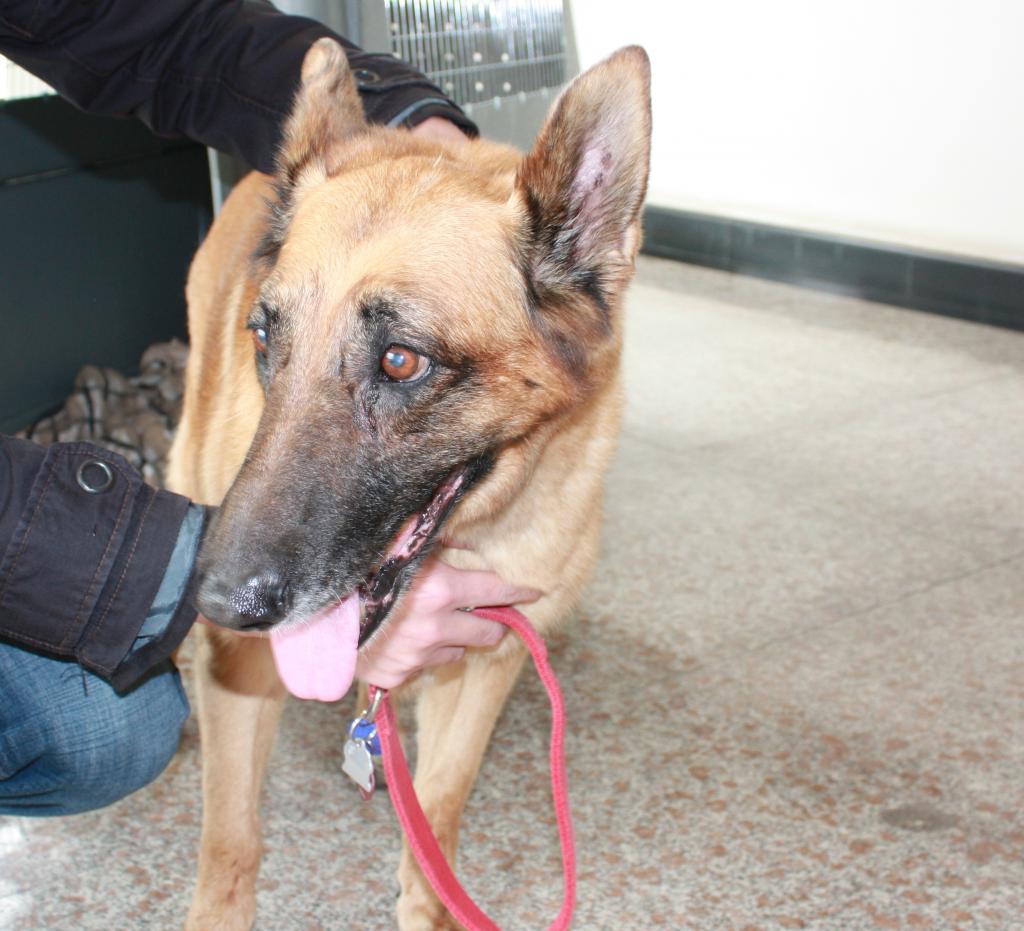Tips and Advice for Air Travel With Older Dogs
 We recently posted a picture of one of our customers, a 14-year-old Belgian Malinois named Phoebe, on the PetRelocation Facebook (that's her pictured to the right). This distinguished beauty attracted lots of attention from our fans, and she also inspired a few people to ask about moving older dogs.
We recently posted a picture of one of our customers, a 14-year-old Belgian Malinois named Phoebe, on the PetRelocation Facebook (that's her pictured to the right). This distinguished beauty attracted lots of attention from our fans, and she also inspired a few people to ask about moving older dogs.
Moving a young, healthy pet can be daunting enough, so it's no surprise that the thought of flying an older pet can cause loving owners to feel a little nervous.
In honor of Phoebe's successful (and carefully planned) move from the United States to Beijing, China, here are a few things to consider when deciding whether or not to move an aging pet.
Talk to Your Vet
First, have an honest conversation with your vet regarding your pet's fitness for travel and request a geriatric exam.
As exciting as the thought of a big move may be, it's not fair to your furry family member to put them through a move that may push the limits of health and safety, so think carefully and critically before going forward with your plans and do all you can to uncover any possible underlying issues that may come into play.
Go Pet Friendly
As always, we encourage you to do some research and choose a pet friendly airline. Not all carriers are focused on providing pet-oriented services, for example ensuring that animals are the last ones on the plane and the first ones off, so check it out beforehand to ensure your older dog receives the best of care.
Crate Training is Key
This goes for all traveling pets, but work to acclimate them to their travel crate well in advance of the trip so that anxiety is kept to a minimum during the actual journey. Putting a familiar item into the crate, such as a favorite blanket or a T-shirt that smells like you, can also help to calm nerves.
Offer Food Mindfully
Many older dogs are finicky eaters or have digestive problems, so be careful about pre-flight diets. Don't feed your dog too close to flying time (allow a few hours between feeding time and flight time), and offer only a light meal.
Stay Calm
Since pets can pick up on your vibes and tend to follow your lead in terms of mood and energy level, it's important to set a good example for them by exhibiting a calm demeanor and keeping them on as regular a schedule as possible before and after the flight. The less their lives are disrupted, the more likely they'll cope well with the flight and adjust to their new surroundings.
After considering all of this, you may decide to move carefully forward, or you may come to the conclusion that it just isn't worth it to move your aging pet. Leaving them with a family member or friend or reconsidering your move might be tough, but ultimately you'll feel good about doing the right thing for your deserving companion.
As always, feel free to explore the PetRelocation website for more information, and don't hesitate to contact us to speak to an experienced Pet Relocation Consultant about putting together a safe move. We understand that relocating can be stressful, and we're here to help!
Editor's Note: This post was originally published in February 2011 and has been updated with new information.
Bringing pets to China?
Here’s what to know about moving pets to China.
